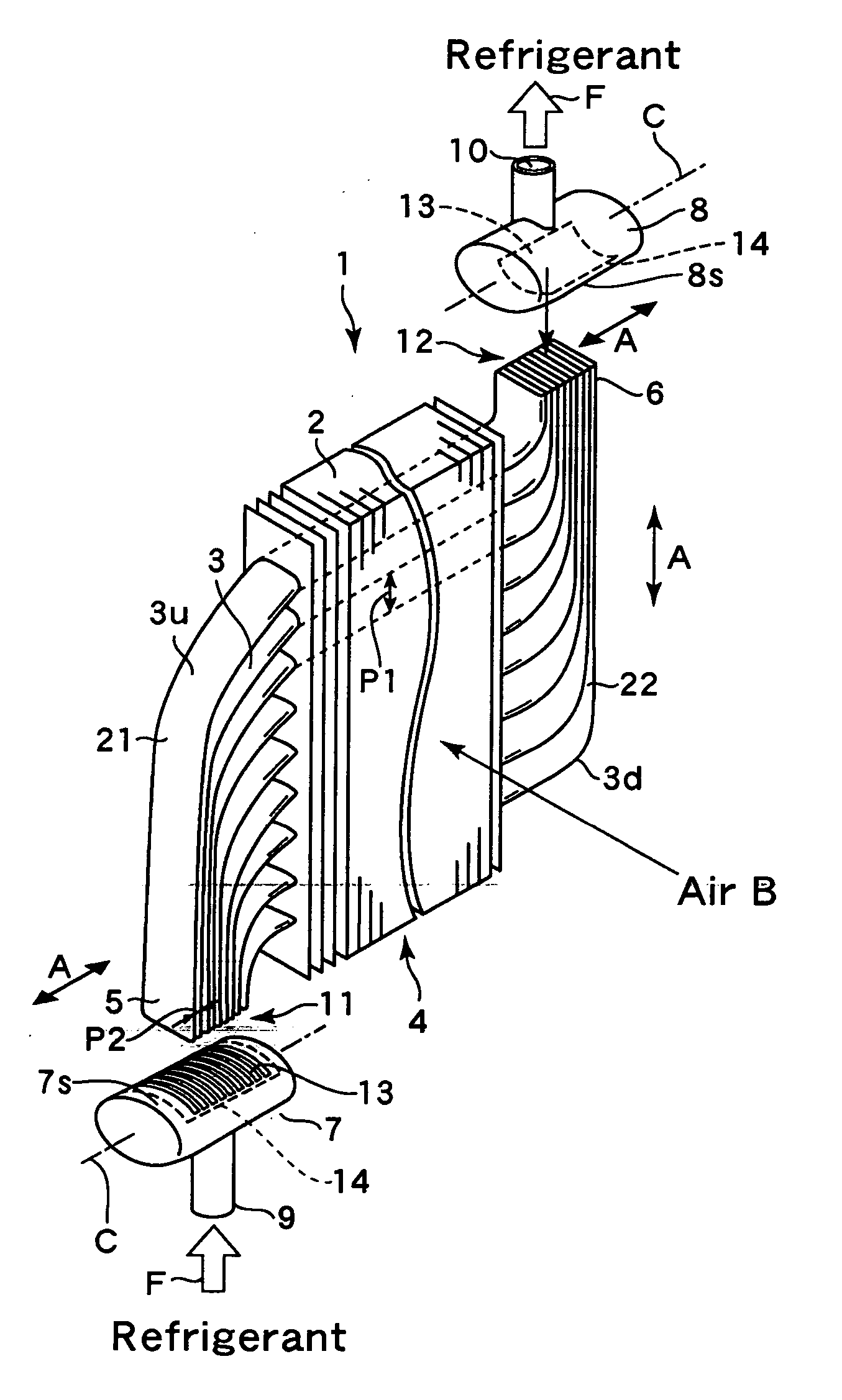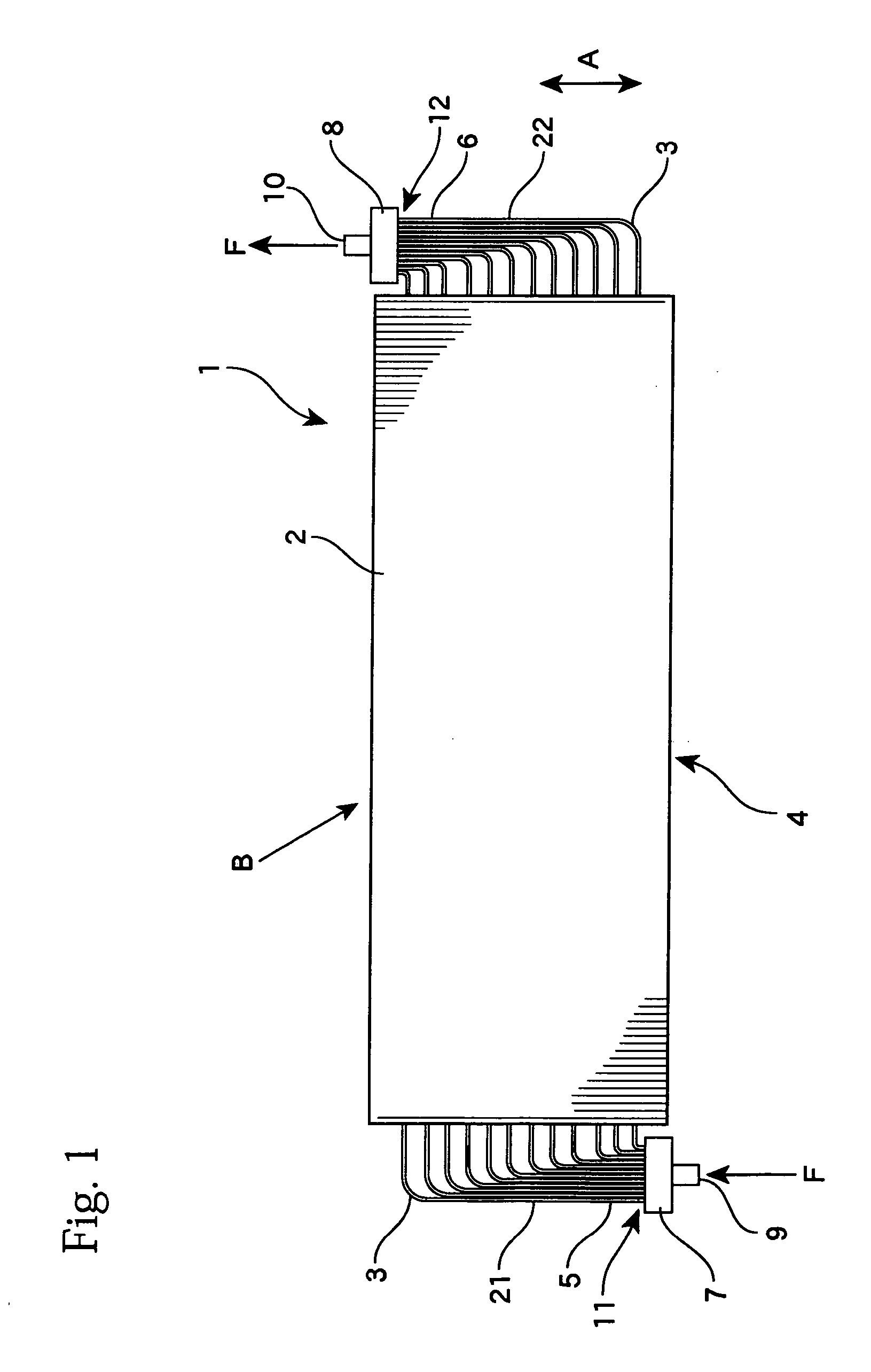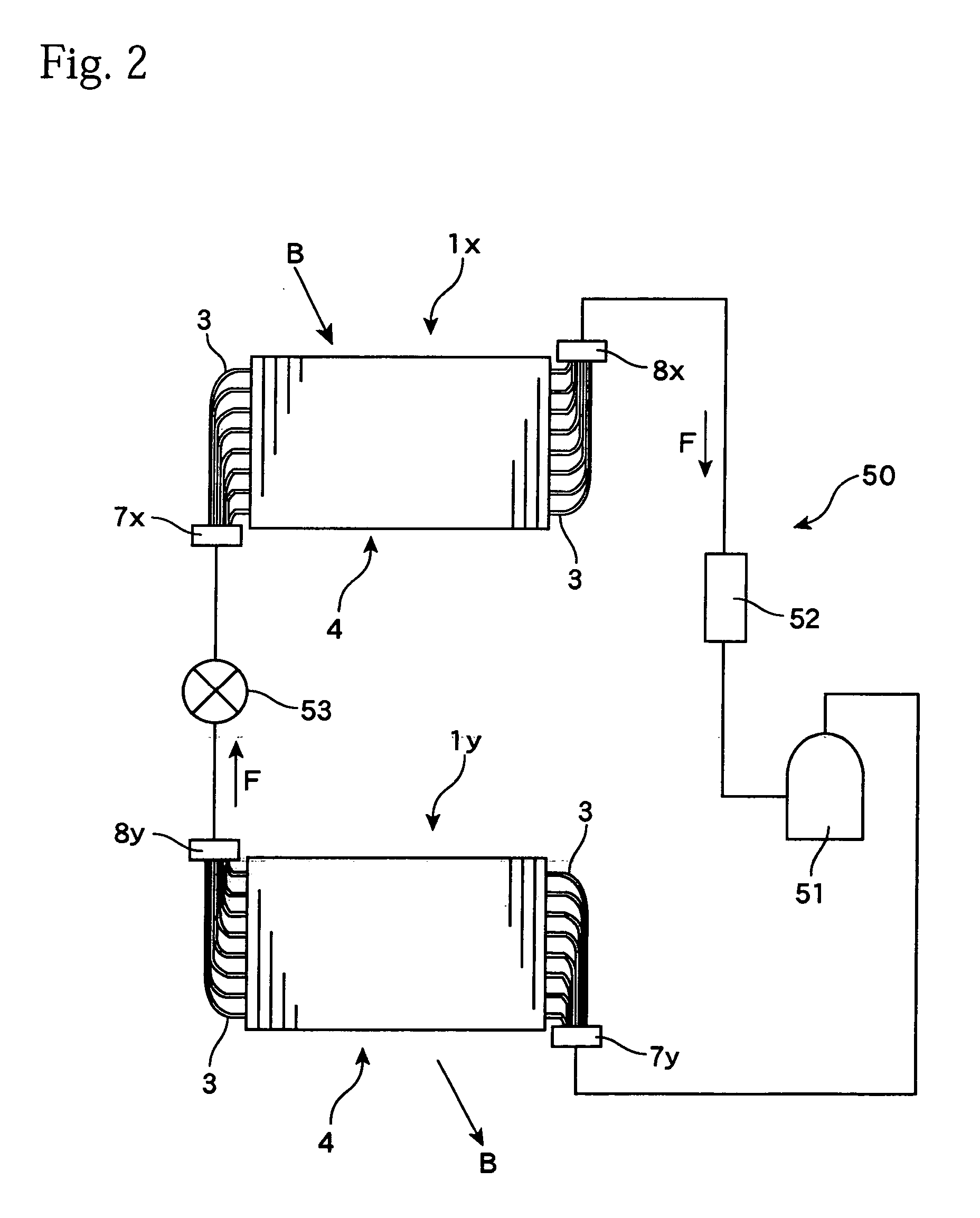Heat exchanger and method of manufacturing the same
a technology of heat exchanger and header, which is applied in the direction of indirect heat exchanger, refrigeration components, light and heating apparatus, etc., can solve the problems of difficult machine openings in headers, high process cost, and inability to meet the requirements of the process, so as to shorten the passing time and the distance of the fluid inside the header. , the effect of reducing the length of the header
- Summary
- Abstract
- Description
- Claims
- Application Information
AI Technical Summary
Benefits of technology
Problems solved by technology
Method used
Image
Examples
Embodiment Construction
[0044] The present invention will now be described in more detail with reference to the drawings. FIG. 1 schematically shows a heat exchanger according to the present invention. The heat exchanger 1 is a so-called “plate fin-type heat exchanger” and includes a plurality of plate-like fins 2 that are disposed in parallel at fixed intervals and a plurality of flat tubes 3 that pass through and are attached to the fins 2 in parallel, with these parts constructing a heat exchange section (heat exchanging unit) 4. In the heat exchanger 1, both end parts 5 and 6 of the plurality of flat tubes 3 are arranged substantially in parallel at second intervals that are narrower than a first interval (pitch) of the flat tubes 3 inside the heat exchange section 4 and are respectively connected to headers 7 and 8 positioned to the left and the right. A heat exchange medium (hereinafter, “internal fluid”) F such as a refrigerant, heat transfer medium, or the like supplied from a supply opening 9 of t...
PUM
 Login to View More
Login to View More Abstract
Description
Claims
Application Information
 Login to View More
Login to View More - R&D
- Intellectual Property
- Life Sciences
- Materials
- Tech Scout
- Unparalleled Data Quality
- Higher Quality Content
- 60% Fewer Hallucinations
Browse by: Latest US Patents, China's latest patents, Technical Efficacy Thesaurus, Application Domain, Technology Topic, Popular Technical Reports.
© 2025 PatSnap. All rights reserved.Legal|Privacy policy|Modern Slavery Act Transparency Statement|Sitemap|About US| Contact US: help@patsnap.com



